"We knew it was going to blow everyone’s socks off!" says BAE's Typhoon designer 30 years after first flight
and live on Freeview channel 276
It is 30 years since the Eurofighter Typhoon took off from an airfield in Lancashire for its first flight through British skies.
In April 1994, engineer Bob Smith from Lytham, was leading a team of experts from across Europe in designing the avionics for the Eurofighter Typhoon - the most advanced fighter aircraft ever built at that time.
Advertisement
Hide AdAdvertisement
Hide Ad"We knew it was going to blow everyone’s socks off!,” says Bob as he recalls the first flight of the Typhoon from Warton Aerodrome three decades ago.
On April 6, Bob excitedly made his way to Warton aerodrome to witness the fighter as it roared majestically through UK skies for the first time.
Bob now recalls the story behind this landmark flight and how it all started as part of a secret project eight years earlier under BAE’s Experimental Aircraft Programme (EAP).
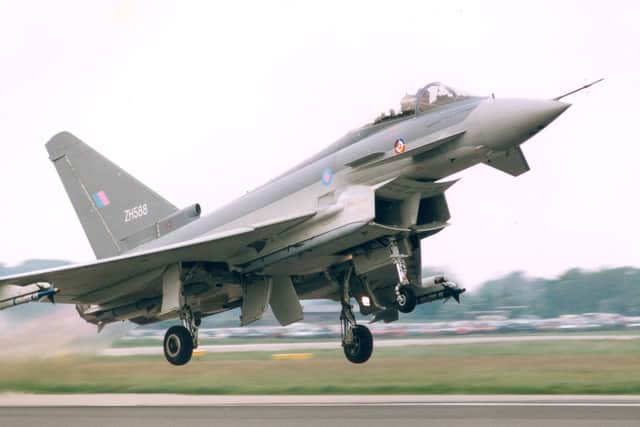

Advertisement
Hide AdAdvertisement
Hide AdHe says: “Because of our experience on EAP we had already tested things like the unstable aircraft design, the fly-by-wire flight control system, the databus for all the communications and the glass cockpit multi-functional displays.
“When we first flew EAP we were a bit more nervous because we were wondering would the databus do what it was supposed to do, and would the flight control software and the fuel system work?
“The way we did things on EAP was completely different to how we had done things before and, even though Typhoon was a completely different beast, we were confident it would be okay.”
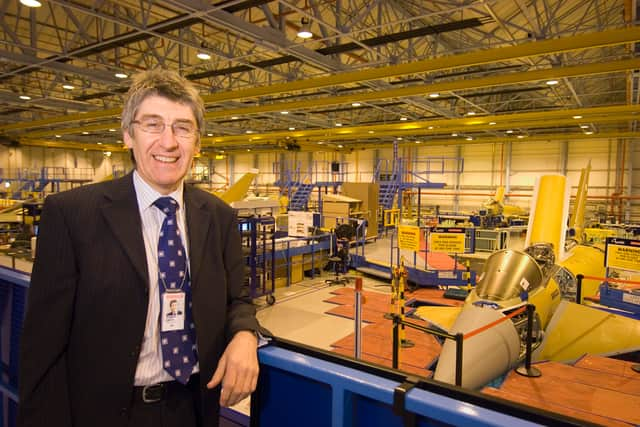

The test jet, known as DA2 (Development Aircraft 2), was one of what would become a fleet of seven development aircraft located across Germany, Italy, Spain and the UK each with a specific role to flight test different features of the aircraft.
Advertisement
Hide AdAdvertisement
Hide AdWhen then-Chief Test Pilot Chris Yeo taxied it out on to the Warton airfield 30 years ago on April 6, 1994, it was just the start of the job.
When he returned home, Yeo reported: “It’s going to be a fighter pilot’s aircraft. I would say although it is at the beginning of its development, Eurofighter Typhoon is already demonstrating great potential.”
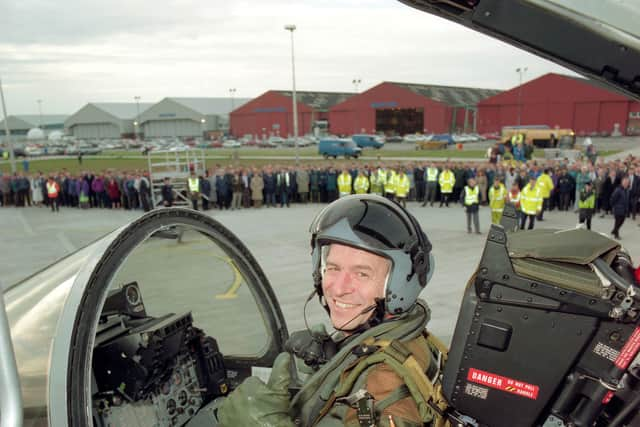

“It made you feel proud - we had produced something special”
That first flight over the skies of the North West lasted 50 minutes, during which the Typhoon attained a speed of 287mph and an altitude of 10,000 feet.
Bob remembers: “That made you feel proud because people like Chris Yeo had been involved in the design of the cockpit – it was a pilot’s cockpit, designed by pilots, for pilots.
Advertisement
Hide AdAdvertisement
Hide Ad“Whenever I heard pilot’s talk about the cockpit and the aerodynamic performance of the aircraft, they made us all realise that we had produced something special.
“I remember Chris saying it had great potential and that was something pilots all across Europe agreed on which was no easy thing because if you ask four pilots a question, you are likely to get eight different answers!”
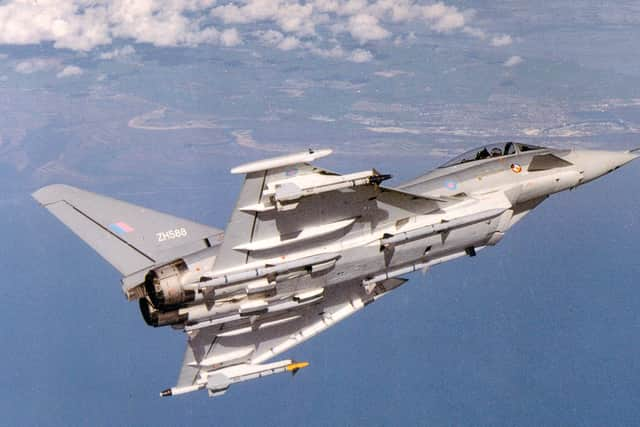

Having taken part in a fly-over of Warton alongside a Tornado, Harrier, Hawk and Jaguar as part of the programme’s official roll-out ceremony - attended by a host of dignitaries including the defence ministers of the four partner nations - DA2 later took to the air show circuit to show off its state-of-the art abilities.
It dazzled crowds at Farnborough, Paris and was also part of The Queen’s Golden Jubilee celebration fly-past where its spectacular displays made it the star of the show.
“We knew it was going to blow everyone’s socks off!”
Advertisement
Hide AdAdvertisement
Hide AdBob says: “There was one time when our Head of Flight Operations, John Turner, did a corkscrew roll which no-one had ever seen before.
“He said, ‘you pull the stick back and just sit back and enjoy the view’, but I was worrying something had gone wrong!
“When he explained what it was, we knew this showed the agility Typhoon was capable of and it was going to blow everyone’s socks off.”
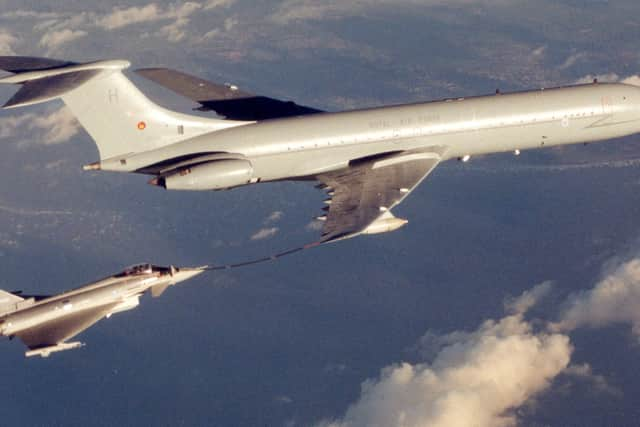

But, aside from creating an aircraft which today continues to meet the needs of air forces across the globe, the legacy of DA2 goes beyond simply the aircraft with the creation of an enduring partnership spanning the four nations of Eurofighter.
Advertisement
Hide AdAdvertisement
Hide AdEven today, Bob remains in contact with some of his old colleagues from his Typhoon days.
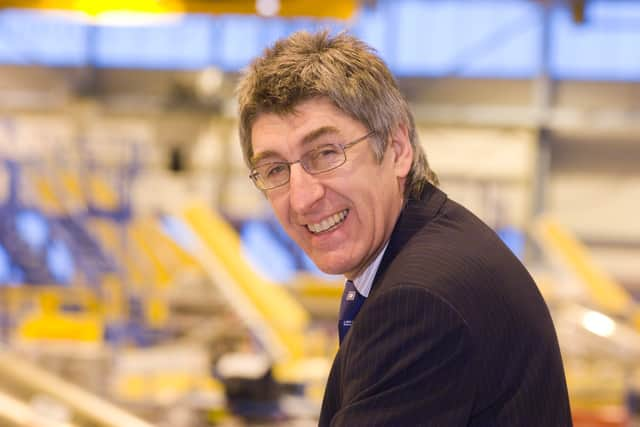

“We produced a world-beating aircraft”
He says: “Whilst I feel immense pride, I share that with some of the senior members of our partner companies.
“Erwin Obermeier, who was project director for DASA and my opposite number from German industry, said to me - ‘as a collaboration, despite everything, we produced a world-beating aircraft’.
“The relationship in a collaboration was like a marriage - you have good times and bad times. It can be hard because you have to agree everything, you have to try to work together which is not always easy.
Advertisement
Hide AdAdvertisement
Hide Ad“If it is a proper collaboration, you have to try and understand where your partner is coming from. You almost have to be a psychologist and maybe spend a bit of time trying to understand why they have an opinion which is maybe different from your own.
“But, if you can get that sort of relationship, everyone can see the issues from other people’s point of view which can help to get to a suitable compromise.
“I think that is what we created together with Eurofighter Typhoon and history shows what can be achieved if you get it right.”
Comment Guidelines
National World encourages reader discussion on our stories. User feedback, insights and back-and-forth exchanges add a rich layer of context to reporting. Please review our Community Guidelines before commenting.